THE LINCOLN AWARD
Honoring Excellence in Aircraft Structural Integrity
History of the Lincoln Award
In 1996, the ASIP Committee established the Lincoln Award to recognize individuals who have made significant contributions throughout their distinguished careers to ensure the structural integrity and safety of our aircraft. The award is named in honor of Dr. Lincoln, a pioneering figure in the field of aerospace engineering, whose groundbreaking work in structural integrity and safety set the foundation for modern aircraft design and safety protocols. This prestigious award honors those who have demonstrated exceptional leadership and dedication to advancing the field of aerospace safety and innovation.
2025 Lincoln Award Winner
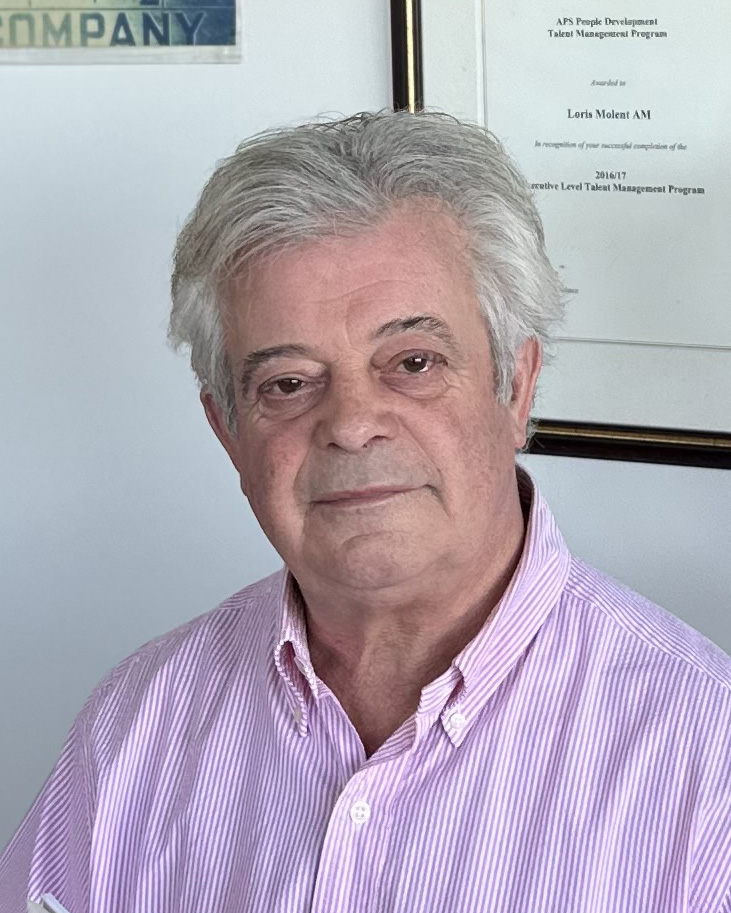
Mr. Loris Molent
AM Aerostructures Consultant and Trainer
Mr. Molent is an acknowledged authority in the fields of aircraft structural integrity, structural mechanics, structural and fatigue testing, advanced composite bonded repair, aircraft vulnerability and aircraft accident investigation. He has over 280 publications in these technical areas and is a qualified aircraft accident investigator. He has been attached to both the Australian Civil Aviation Department and the US Navy NAVAIR Structures in Washington D.C. as an airworthiness engineer and has a broad network of collaborators both nationally and internationally, and has worked alongside many Air Forces and aircraft OEMs. After 38 years in Australian Defence, in October 2020 he retired as the Defence Science and Technology Group’s Head of Emerging Aircraft Structural Integrity.
In 2010 he was presented with the Minister’s Award for Achievements in Defence Science, in 2016 was awarded with a Member of the Order of Australia (AM) and has numerous team achievement awards. In 2024 he was awarded IAAM’ Scientist Medal in recognition of outstanding contributions to the advancement of materials and technology. He is currently a consultant and trainer in Aircraft Structural Integrity, Air Accident Investigation and novel fatigue analyses methods.
To find out more about Molent and his experience and achievements within the aircraft structural integrity industry, visit www.molent.com.
Manager of the Year Award Winners
2024
Michelle K. Warmoth
2023
David M. Keller
2022
Jessie W. Martin
2021
Gregory T. Wood
2020
Announced at ASIP
2019
Richard B. Tayek
2018
Travis L. Reese
2017
Jon Kimmel
2016
Wirt Garcia
2015
Robert E. Bair
2014
David K. Wilkinson
2013
Darren B. Fritz
2012
Rodney Harberson
2011
Bryce Harris
2010
Paul D. Currie
2009
Michael P. Blinn
2008
Mike Sneed
2007
Mark L. Thomsen
2006
Peter J. Christiansen
2005
J. Alex Gaskin
Lincoln Award Winners
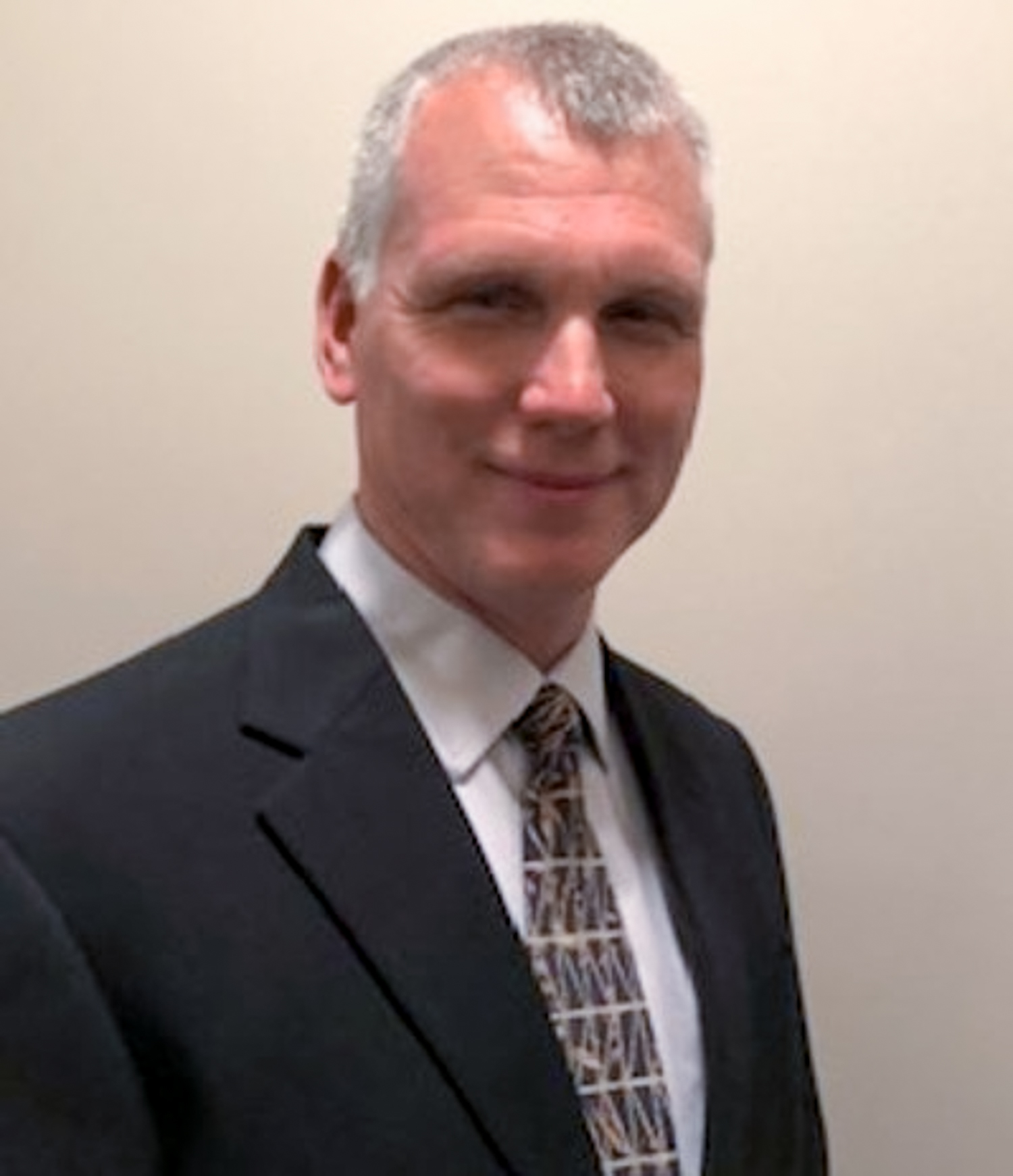
Mr. Chris Maddox
Structural Integrity Lead, Boeing, St. Louis, MO
Chris is currently the structural integrity lead for Boeing Phantom Works Proprietary Programs in St. Louis and is also recognized as the structures technical expert in Boeing Defense Systems Air Dominance Division which includes T-7A, F-15, F-18, MQ-25, MQ-28, and Phantom Works Proprietary Programs. Chris is a respected Boeing Technical Fellow in Structural Analysis and Structures Airworthiness Certification and serves as a technical mentor to many Boeing engineers. Chris enjoys developing and leading technical teams, helping to develop the next generation of technical leaders.
The expertise Chris provides is highly valued within The Boeing Company and with customers. Chris authors Design Practices aligned with ASIP methodologies and is often consulted for Non-Advocate Reviews.
Chris has over 37 years of experience working primarily in aircraft structural integrity across many Boeing legacy and development programs. Chris began his career working in multiple structures disciplines including Vibration and Acoustics Test Engineering, Airframe Design and Strength Engineering, Material Review Board Engineering, Flight Test, and Flight Simulation.
Focusing on Airframe Structural Analysis, Chris quickly became an expert in his field and has spent the last 15 years working closely with USAF engineering on structural certification plans on numerous programs in line with MIL-STD-1530D ASIP criteria, ultimately leading to successful airworthiness certification.
Chris earned his Bachelors of Science in Aerospace Engineering and a Masters of Science in Engineering Mechanics from Missouri University of Science and Technology.
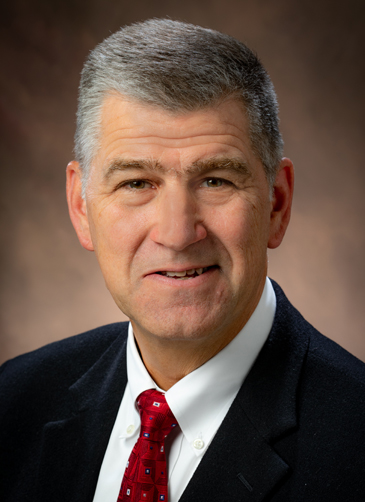
Dr. Lawrence M. Butkus
USAF (Ret), Visiting Assistant Professor, Miami University, Oxford, Ohio
Dr. Lawrence M. Butkus is a Visiting Assistant Professor in the Department of Mechanical & Manufacturing Engineering at Miami University in Oxford, Ohio. Larry joined Miami University after serving for more than 21 years as an officer and an additional 14 years as a civilian employee of the United States Air Force (USAF).
He retired from the USAF in 2021 as Chief of the Air Force Airworthiness Office at Wright-Patterson Air Force Base, Ohio. In this position, Dr. Butkus provided leadership, resources, policies, and processes to perform airworthiness assessments on all air systems owned, leased, operated, used, designed, or modified by the USAF.
Dr. Butkus’ previous assignments include Chief Engineer of the Air Force Research Laboratory’s (AFRL’s) Materials & Manufacturing Directorate, Lead of AFRL’s Structural Materials Evaluation Team, Deputy for the USAF’s Aircraft Structural Integrity Program (ASIP), Lead of the F118 Engine Integrated Product Team, USAF Academy faculty member, and investigator supporting the Columbia Accident Investigation Board.
He is an evaluation team chair and evaluator for undergraduate engineering programs for ABET, a Fellow of the American Society of Mechanical Engineers, and a licensed professional engineer.
Dr. Butkus earned his bachelor’s, master’s, and doctoral degrees in mechanical engineering from the Massachusetts Institute of Technology, the University of Michigan, and the Georgia Institute of Technology, respectively.
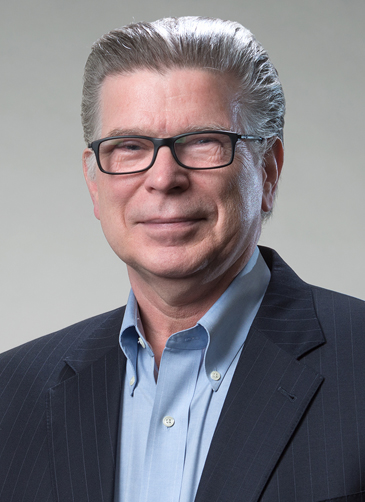
Dr. Dale L. Ball, Ph.D.
Lockheed Martin Senior Fellow, Lockheed Martin Aeronautics Company
Dale Ball has worked in the area of aircraft structural durability and damage tolerance for the past 39 years. He has been directly involved with fatigue spectrum generation methods and software development, fatigue crack initiation and growth analysis methods and software development, and with structural integrity requirements development and certification for air vehicles. Dale has worked in the military aircraft manufacturing industry throughout his career, supporting programs ranging from the B-2 stealth bomber, to the National Aerospace Plane (NASP), to the F-35 Joint Strike Fighter. His current research interests include the development of thermomechanical fatigue analysis methods for reusable hypersonic vehicles, the advancement of metal additive manufacturing technologies, and the modeling of residual stresses and non-linear material response and the impacts that they have on fatigue and fatigue crack growth. Dr. Ball holds a BS in Mechanical Engineering (from Louisiana State University), an MS in Engineering Mechanics and a Ph.D. in Materials Science and Engineering (both from the University of Texas at Arlington), and has authored or co-authored over ninety articles and conference publications. He is currently a Senior Fellow in the area of fatigue, fracture and sustainment methods development and test at Lockheed Martin Aeronautics Company in Fort Worth Texas, where he has been for the past 34 years.
Announcement
Due to the decision to conduct ASIP 2020 in a virtual format, the ASIP Planning Committee has decided not to have a Lincoln Award Winner or ASIP Manager of the Year Award Winner for this year. As our ASIP attendees know, these awards are held in high regard within the ASIP community and we feel it would be a disservice to the prestige of these awards to present them virtually. We appreciate your understanding and look forward to next year when our community comes together in the traditional format to experience this honored ASIP tradition.
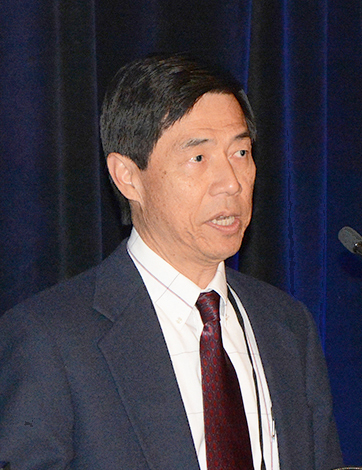
Mr. Ko-Wei Liu
Technical Lead Engineer on the C-17 Program, Boeing
Ko-Wei is a Technical Lead Engineer on the C-17 Program at Boeing in Long Beach, California. His career has been spent entirely in the field of aircraft structures in various disciplines supporting ASIP. This includes research and methodology development, requirements, stress, fatigue, fracture mechanics, finite element, testing, aircraft tracking, design and production support, structural certification, failure analysis, repair, risk analysis, and sustainment.
Ko-Wei began his aerospace career with Rockwell International in 1978 in El Segundo, California. During his time at Rockwell International Aircraft Division, Ko-Wei worked in research, development, B-1 and T-39 programs. His assignment included analysis tool development, stress, finite element, design support, testing, and aircraft tracking. It was on the B-1 program when he was first introduced to MIL-STD-1530, MIL-A-83444 and MIL-A-8866.
In 1985, Ko-Wei joined McDonnell Douglas Commercial Aircraft in Long Beach. He worked the development of DC-10 supplementary inspection document and MD11 damage tolerance assessment. Later he was tasked to lead the Navy T-45 landing gear team supervising the durability analyses and full scale fatigue test engineering development. With his experience on D&DT on B-1, he was also supporting C-17 ASIP during this time. He officially joined the C-17 program in 1987 as lead engineer forming a team responsible for analysis tools development, establishing durability and damage tolerance design criteria, analysis procedures and guidelines, planned and executed development test program, and supported the maintenance steering group in the development of structural maintenance requirements.
In the early 1990s Ko-Wei was asked to lead the durability and damage tolerance group responsible for executing C-17 ASIP that included DADTA, full scale durability test, individual aircraft tracking, loads monitoring, force structural maintenance and Analytical Condition Inspection programs. The team’s main accomplishment was to complete all the contractual ASIP requirements, and obtain airframe airworthiness for flight. He was also in charge of full scale durability test failure root cause assessment and developing solutions to correct the deficiencies. In late 1990s Ko-Wei participated in large unitized structure implementation and evaluating new technologies to reduce manufacturing cost. He worked closely with customers to develop criteria and qualification plan to certify the new design structure. Currently Ko-Wei oversees the team that is responsible for executing all the ASIP sustainment activities, support in-service issues, defining structural maintenance and modification requirements, and support force management activities. He also works closely with USAF and foreign customers on maintaining structural airworthiness of the C-17 aircraft.
Ko-Wei earned his MS degree in Engineering from California State University, Long Beach. He has authored several technical papers as well as engineering reports. Ko-Wei was selected as a Boeing Technical Fellow in 2003. In this capacity, he has been asked to provide engineering support and consultation to other Boeing aircraft programs and has served as member of numerous Independent Review Teams, within and outside of Boeing.
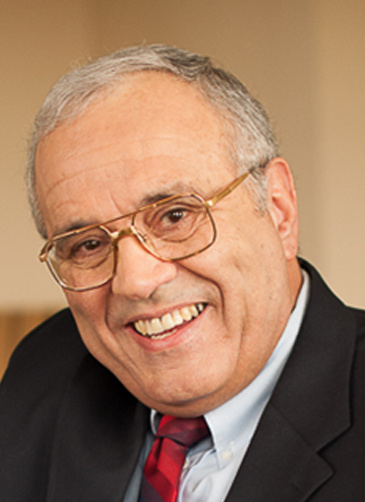
Dr. Robert "Bob" J. Bucci
Arconic (formerly Alcoa), Retired
After obtaining a B.S. in mechanical engineering from Northeastern University (1964) and M.S. in engineering from Brown University (1967), Bob went on to complete his PhD work at Lehigh University under the guidance of Paul Paris, his research advisor. Upon completing his Ph.D. (1970) Bob joined Del Research Corporation, a Paul Paris established small business firm specializing in fracture mechanics research, testing and training. Through 1973 Bob served as Del Research Vice President of Technology responsible for lab direction and engineering support to enterprise programs focused on expanding fracture mechanics based theories/practices for structural materials evaluation. The 1967-1973 student apprentice years Bob spent at both Lehigh and Del Research coincided with the dawn of Damage Tolerance insertion into government/industry specifications – and it was over this timeframe that Bob learned from many of the "Fracture Mechanics Greats". Bob's contributions to the field over this time period laid important groundwork for the eventual standardization of technique for measuring fatigue crack growth rate (FCGR) and thin material fracture toughness via the R-curve approach. His pioneering work also gave foundation to ΔKth and near-threshold FCGR measurement technique as well as deeper insights on how to more routinely measure and apply crack closure (ΔKeff) based concepts to clarify impacts of precrack, environment, stress ratio, over/under loads and residual stress on FCGR measurement and cyclic life modeling.
In 1973 Bob joined Alcoa where at the Alcoa (now Arconic) Technical Center he held the position of Sr. Technical Consultant before retiring in 2014. Over the course of his Alcoa career, Bob worked many aspects of aluminum product/process development and related technologies, most notably those directed to supporting the needs of Alcoa aerospace product business units with whom he worked closely to facilitate technical marketing and product development/insertion efforts. In doing so, Bob maintained high level technical working relationships with Alcoa customers, government labs, industry committees and academia to leverage R&D. For more than four decades he kept Alcoa at the forefront of developing critical knowledge and capabilities to capture and transition the benefit of Alcoa structural product improvements, particularly in areas related to fatigue, fracture and DADT structural integrity conformance. In the latter portion of his career Bob's role morphed to that of a Sr. Technical Consultant tasked with identifying technology gaps and formulating/applying advanced technical approaches/strategies, including the mentoring of teams and individual researchers to ensure needs are met.
Throughout, Bob leveraged his fatigue and fracture mechanics background, to make significant core contributions to methodologies used in new product development and introduction. He remained an active contributor to the body of knowledge associated with development and deployment of landmark ASTM Test Method Standards (like E399, E647 & E561) and other linked specifications. Many of the results and capabilities added by Bob have and continue to be exploited to define alloy development targets and technically market Alcoa DADT improved alloys (e.g., 7475, 7085, 2524, 2624, Al-Li, …) and product forms (e.g., high quality thick plate, superior stress-relief forgings). Bob's advocacy was also a force in driving Alcoa's turn-of-the-century paradigm shift in aerospace technology strategy from that of continuous (incremental) alloy improvements to one of a solution provider capable of meeting the demanding mission requirements of current and future-generation aircraft - the goal being to strengthen Alcoa's supply chain position while also demonstrating the value of early involvement in design and decision making processes. Bob's main technical contribution to the evolving shift entailed adding to the Alcoa tool box – more structurally representative testing and data to feed newly developed sets of virtual design trade study tools – to thereby enable more rapid demonstration of the improvement potential of higher performing materials combined with innovative design and manufacturing technologies. Now into its second decade, the initiative has produced a number of collaborative and systems based partnerships with government and industry primes to successfully demonstrate viability and readiness of metal intense product/design solutions (e.g., Advance Hybrid Aerostructure and Alcoa "Best" Wing Box & "Best" Fuselage Barrel Solutions) capable of multifold savings in structural weight and cost over existing state-of-the-art.
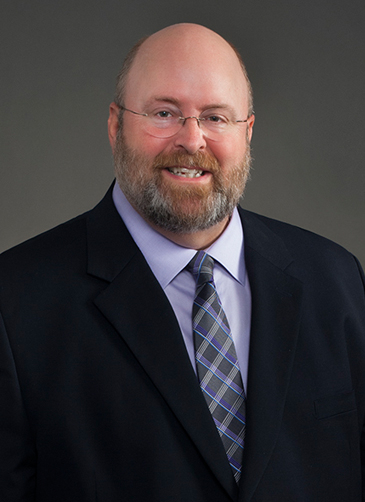
Mr. Robert "Bob" J. Burt
Lockheed Martin Aeronautics (Retired)
Bob's first assignment upon hiring into the Fort Worth Division of General Dynamics was assisting in developing the original Loads, Environment and Spectra Survey program for the F-16 aircraft. He was immediately introduced to MIL-STD-1530 and the five pillars of ASIP. Upon retiring in August of this year Bob has spent his entire career in the various structures disciplines supporting the ASIP; including design loads analysis, stress analysis, fatigue and fracture analyses, material allowable development, static and durability test planning and execution, structural flight test planning and execution, finite element analysis and test correlation, structural dynamics, acoustic and vibration analysis and structural certification planning.
Bob was a stress analyst on the F-111 program when he first met Bill Sutherland and Dr. Jack Lincoln, concerning fatigue failures in compression structures, occurring during cold proof testing the aircraft at design limit load while at -40 degrees Fahrenheit. Bob performed stress analysis on the EF-111A Pave Tack installation which was later used extensively during the air attack on Libya in 1986. During the period when Bob was the F-111 lead stress analyst, the team accomplished the required carriage strength analysis for delivery of the "bunker buster" weapon and performed residual strength analyses to allow an F-111 to safely ferry from the UK back to the US with failed primary airframe structure. In 1994 Bob monitored a number of strain gauges on an EF-111A which had a buckled carry through box front spar during successful cold proof testing at McClellan Air Force Base in Sacramento, California. During the late 1990s under Bob's direction a team of structure engineers developed a new F-111C aircraft level coarse grid finite element model which was solved and correlated to test data for the Royal Australian Air Force.
During the late 1980s Bob was the lead structures engineer supporting the development of the General Dynamics Antenna Test Facility at Meridian, Texas. These tasks involved the structural analysis, structural testing and manufacturing of an 80 foot long large pylon support system capable of testing full scale aircraft concepts. Large precision gearboxes were developed and tested in order to pitch and yaw full scale aircraft concepts at the very top of the pylon support system. Also during this time Bob was the lead structures engineer supervising the strength analyses for wind tunnel and radar models to be tested at various facilities across the US.
Bob spent two years on the A-12 program as a lead structures engineer in charge of strength and fatigue analysis of the engine mounts, all in flight operating doors, (i.e., the strike weapons bay doors, landing gear and arresting hook doors, self-protect bay doors and more), the arresting hook and spin chute installations, the external pylon and various armament installations. He was also tasked with the development of a fire suppression system which required extensive structural testing due to the impulsive high pressure release of the suppression gases. After the A-12 program he was assigned to the F-16 program as the lead stress analyst in charge of stress analysis and reports for the Taiwan Block 20 aircraft. Bob was in charge of a team of structures engineers that developed and correlated all of the fine grid finite element analysis for the F-16 Falcon UP program. He also led the test plan and execution of a series of strain surveys on a modified F-16 Block 40 which were used to correlate the analytical predictions.
As the chief structures engineer, Bob executed and developed the F-16 ASIP program which included the development and correlation of new aircraft level finite element models and the development and correlation of fine grid finite element models for primary structure, such as the wing carry through bulkheads, the fuel shelf joints in these bulkheads, the vertical tail support bulkheads and eventually the main and nose landing gears and airframe support structures for the landing gears. During this time the team executed the FMS Block 52 program where the conformal fuel tanks were successfully added to the F-16 aircraft. This involved drawing sign-out for the aircraft back-up structure as well as oversight to the vendor designing and building the tanks and a flight test program to verify the applied loads. A strain survey was performed on a Block 52 F-16 which correlated and validated the analytical finite element predictions.
For the past 12 years Bob has been directing the technical, cost and schedule for the structures, structures design, mechanical design and materials and processes tasks associated to the development of the F-35A, B and C Joint Strike Fighter program. Under Bob's direction a robust corrosion control plan has been developed and is implemented, static testing on all three aircraft type version has been completed and durability testing for all three type versions have successfully completed 16,000 hours of maneuver and buffet testing.
After receiving his BS degree in Aeronautical Engineering in 1979 from the State University of New York at Buffalo, Bob earned is MS degree in Engineering Mechanics from the University of Texas at Arlington in 1983. Bob has earned multiple Special Recognition Awards, multiple Aero Star awards, a Nova Award and the President's Award during his career at LM Aeronautics. Bob is an avid student and researcher in the history of airplane structures, design and testing. He and his college sweetheart Vicki have been married for 38 years and have a grown son, a grown daughter and one granddaughter.

Dr. Anders Blom
Swedish Defence Research Agency and INNOVAIR
Anders obtained his M.Sc. in Mechanical Engineering at Linköping University in 1979 after having spent his last year making thesis work, on plasma welded bellows for ultra high vacuum applications, at CERN (the European Organization for Nuclear Research) in Geneva, Switzerland. He then joined the Aeronautical Research Institute of Sweden (FFA) in 1980, which was merged with another institute into the Swedish Defence Research Agency (FOI) in 2001. He has held various positions at these organizations, including head of fatigue and fracture, head of structures and materials, and head of aeronautics.
Anders currently has two half time functions as research director for aeronautics at FOI and as program director for INNOVAIR, the national strategic innovation program for aeronautics. The latter runs both research and demonstrator programs for both civil and military aeronautics and involves all national actors, i.e., large industries (Saab and GKN Aerospace Sweden), SMEs, universities, institutes (FOI, Swerea), agencies (Armed Forces, Swedish Defence Materiel Administration) and governmental bodies, see www.innovair.org.
Anders earned his Ph.D. (1984) and D.Sc. (1985) in Lightweight Structures at the Royal Institute of Technology (KTH) in Stockholm where he was also adjunct professor 1987-1996. He was elected member of the Royal Swedish Academy of Engineering Sciences in 1994 and has held various functions there, including being chairman of the Division for Mechanical Engineering, chairman of the Industrial Research Group, and chairman of the Akzo Nobel Science Award.
From his experience in aeronautical R&D are some 150 papers on fatigue and fracture, fibre composites, non-linear finite element analysis, structural and materials testing, damage tolerance and durability of aircraft structures, etc. He has worked on structural issues for various civil and military aircraft, introduction of damage tolerance criteria for the fighter 37 Viggen, certification of the new Swedish fighter Gripen, multiple cracking in Finnish Air Force´s F-18, failure analysis of Ariane 5 rocket for Arianespace, France, failure analysis of various nuclear reactor components, fatigue of large wind turbines in Sweden and Denmark, and consulting on structural and material problems for Volvo Michigan Euclid, Avesta Sheffield, Swedish Steel, Sunds Defibrator, and other Swedish industries.
Anders became the Swedish national delegate to ICAF in 1985, and is the general secretary of ICAF since 2005. He was active in AGARD (NATO Advisory Group for Aeronautical Research and Development) where he was main lecturer for NATO Advanced Institute on Advances in Fatigue Science and Technology in 1988. He is the Swedish representative, appointed by Ministry of Enterprise and Innovation, in ACARE General Assembly (Advisory Council for Aviation Research and Innovation in Europe) and national council member of ICAS (International Council of the Aeronautical Sciences).
Anders is also currently a Board Member of: - EREA (Association of European Research Establishments in Aeronautics) - GARTEUR (Group for Aeronautical Research and Technology in Europe) where he is head of the Swedish Delegation, appointed by Ministry of Defence. - IFAR (International Forum for Aeronautical Research)
He is further a national technical expert in EDA (European Defence Agency) Cap Tech ESM02 (Air Systems and their Environment) and is the chairman of the steering committee for the International Fatigue Series.
Anders was awarded the F.J. Plantema Award by ICAF in 2001. He has also received the Thulin silver medal, for development of fatigue and fracture mechanics for metallic structures, in 1997, and the Thulin gold medal, for his contributions to Swedish Aeronautics, in 2016. The latter are awarded by the Swedish Society for Aeronautics and Astronautics together with the Royal Swedish Academy of Engineering Sciences.
Privately, Anders spends time on classical music, his art collection, scuba diving, travelling, and his family consisting of Ana-Maria, two sons, a grandson, and two bonus children.
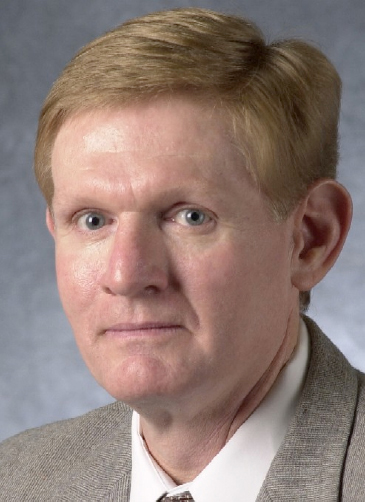
Mr. Ed Ingram
Lockheed Martin (Retired)
Ed began his association with Lockheed in 1974 as a stress engineer on the C-130. He retired in 2013 after nearly 40 years of service. His career was spent entirely in the field of aircraft structures, but included varied assignments that resulted in experience in most of the structural sub-disciplines. At different times, he was involved in stress, fatigue, damage tolerance, finite element, structural dynamics and risk analysis.
By 1980, Ed was a Lead Engineer on the Durability and Damage Tolerance Analysis (DADTA) of the Air Force C-130s. In this assignment, he participated in developing many of the models and methods that would be used in the assessment and are still largely used on C-130 today. Throughout this project, the development and application of the methods was reviewed quarterly by Dr. Lincoln. Ed considers the interactions with Dr. Lincoln over the course of several years on that project to have been an invaluable learning experience.
Next, Mr. Ingram was assigned another DADTA Lead engineer responsibility. This time, in Burbank, California for the assessment of the SR-71, where once again he benefitted from technical interaction with Dr. Lincoln.
Over the next few years, Ed held engineering leadership positions on the C-5B and Special Projects. Following the 1986 Challenger accident, Ed supported NASA during the Space Shuttle Recertification. He continued to work with NASA on several structures research projects throughout the 1990s, culminating with the High Speed Civil Transport.
In the early 2000s, Lockheed Martin and the Air Force began the C-5M Program to modernize the C-5 with new engines and pylons, along with the avionics upgrades. Assigned once again to C-5, Ed served as Chief Technical Advisor and Chairman of the Fracture Control. In this time frame, the C-5 encountered several structural problems with stress corrosion cracking in a number of airframe components, including a major fitting called the Tiebox. The Tiebox problem led to Ed working again with Dr. Lincoln to find a solution that would maintain risk to safe levels until new fittings were available.
Following the peak of the C-5M work, Ed was asked to support the Widespread Fatigue Damage Assessment of the aging commercial transports, by preparing the Methodology Plan and by consulting throughout the assessment. In 2002, he was selected as a Technical Fellow, and in 2008, Senior Fellow. In these capacities, Ed was asked to provide engineering support to a number of projects, including F-22 and F-35. He was also honored to be a member of the writing team for revision C of Mil-Std-1530.
Ed has authored several technical papers as well as numerous Lockheed Martin engineering reports.
Mr. Ingram earned a B.S. in Aerospace Engineering from Auburn University and a M.S. in Aerospace Engineering from Georgia Tech. He and Jan have been married for 44 years, and are blessed with two wonderful daughters and seven amazing grandchildren.
